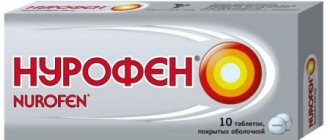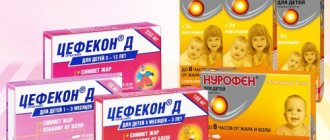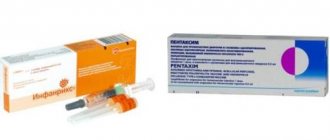Today, pharmacies offer such a wide selection of painkillers that sometimes it is simply difficult for a person to make a choice. But two medications are still in great demand among consumers - Ibuprofen and Nurofen. They are identical in composition and have similar indications for use. But what is better: Nurofen or Ibuprofen? You will learn about this from our article.
Original or generic? Which drug is more effective?
The active ingredient of both drugs, ibuprofen, is included in the WHO list of essential medicines. This list includes only drugs with proven effectiveness and safety, confirmed by clinical trials and many years of experience of doctors around the world. It is worth noting that among all the drugs from the NSAID group, only three received this honor. In addition to ibuprofen, the list includes paracetamol and acetylsalicylic acid.
When we compare drugs with the same active ingredient, we first of all try to find out which of them is original and which is an analogue (generic). The original product undergoes clinical trials, and the manufacturer receives a patent for the manufacture of this drug. But the patent does not apply to the entire product, but only to its main part - the molecule of the active substance. The patent does not cover auxiliary components, and analogues of the drug appear on the pharmaceutical market.
Generics
– these are products similar in composition to the original drug. They appear when the original's patent expires. The active ingredient of the original product and the generic will be the same, but the technology for preparing the drug and the composition of the auxiliary components will be different. You need to know this, because often it is the manufacturing features that make the drug not only effective, but also safe.
For example, this happens in practice. The original drug in the form of a tablet was made by sequentially applying layers on top of each other, and in the generic version, all the components were simply mixed. In the first case, the active substance of the tablet will slowly enter the bloodstream, and the drug will act for a long time. In the second, the effect will be quick but short-lived.
It also happens differently - when low-quality cheap components are added to the generic. They can cause an allergic reaction and cause side effects. Or, for example, the original product is covered with an acid-resistant coating, and the generic is coated with a regular one. Therefore, the original passes through the stomach without problems and enters the blood through the intestines, while the generic simply dissolves in the gastric juice and does not provide a therapeutic effect.
It is believed that the original product will always be more effective and safer than the generic. However, the original is more expensive - and sometimes the difference with the copy is significant. Usually the doctor offers medications to choose from, and it is up to the patient to decide which one to buy.
In our example, we are dealing with two generics. The original drug was produced in 1962 by a British company and registered under the trade name Brufen. For a long time, it was sold exclusively by prescription and was inaccessible to many people, until the situation radically changed - and Nurofen entered the market in 1983. According to information from the archives, the drug gained incredible popularity. Today, British Nurofen is one of the leaders in sales in pharmacies.
Ibuprofen, similar in name to the name of the active substance, is produced in Russia. There are about ten companies producing this drug - which largely determines its low cost. The problem is that there have been no clinical studies comparing the British Nurofen and at least one of the Russian Ibuprofens. We don’t know if there is a difference between them and we can’t definitely say which product is better.
The only thing we can say with confidence is that the original ibuprofen has proven its effectiveness in clinical trials:
- Cochrane has shown that ibuprofen is better than paracetamol in treating inflammatory processes.
- Effective in adults.
- Successful for relieving almost any pain not associated with the oncological process.
- muscle and joint pain in various diseases.
- It works well as an antipyretic for acute respiratory infections.
It is important to remember that all studies relate to brand-name UK-made ibuprofen, but may not fully reflect the effectiveness and safety of generics.
Evidence base: are anti-inflammatory drugs effective?
There is no doubt about the effectiveness of the drugs in question. Ibuprofen has been prescribed under various trade names since the middle of the last century. The medical database PubMed and the Cochrane Library contain many articles that mention ibuprofen in one way or another. The principle of action and effectiveness of NSAIDs is also assessed in other sources, including in Russian. Not all of them are of interest to us, so we will focus only on the most important studies.
Compared to paracetamol, ibuprofen has proven to be a more effective remedy in the fight against inflammatory processes. The study involved patients who had undergone surgery to remove wisdom teeth.
In another trial, researchers assessed the effectiveness of ibuprofen in treating tension-type headaches in adults. It turned out that the drug at a dosage of 400 mg suppresses pain within two hours after use. For migraines, ibuprofen also helps relieve the main symptoms: headache and aura.
Ibuprofen is actively used to reduce any chronic pain not associated with cancer. Clinical trials have shown that the drug copes with the task.
For respiratory diseases, ibuprofen works as an anti-inflammatory and antipyretic agent. It lowers body temperature, reduces sore throat and eases the general condition.
Clinical trials show that ibuprofen relieves muscle and joint pain due to inflammatory processes.
Comparative studies of the effectiveness of Ibuprofen and Nurofen have not been conducted. We can only assume that the difference between the drugs is due to their rate of absorption and bioavailability. There are no differences on the last point - the instructions for use indicate that both products are well absorbed. But foreign Nurofen acts faster - it reaches its maximum within 45 minutes after use. The domestic analog requires more time - at least an hour.
The difference in the effects of the drugs is explained by their composition. The active ingredient is the same, but the auxiliary elements are different. The technology for preparing drugs is also different. All these nuances determine the therapeutic effectiveness of a particular drug.
Price is another important aspect of comparing drugs. Russian Ibuprofen costs only 20-30 rubles. The cost of the drug should include the costs of purchasing high-quality raw materials and equipment, delivery, clinical trials and advertising. If a drug costs less than a loaf of bread, you need to think about what its manufacturers saved on.
How do NSAIDs work?
Ibuprofen, like all non-steroidal anti-inflammatory drugs, works through the enzyme cyclooxygenase (COX). It blocks COX-2, suppresses prostaglandin synthesis and has a triple effect:
- relieves inflammation;
- reduces pain;
- reduces high body temperature.
Ibuprofen, unlike many other NSAIDs, effectively affects all three links. This compares favorably with paracetamol, which reduces fever well, but does not cope well with pain and inflammation. Ibuprofen also wins compared to new NSAIDs, which effectively suppress the cascade of inflammatory reactions, but are not so good (and most importantly, safe) for fever.
Ibuprofen, like all old NSAIDs, has one significant drawback - it affects not only the inflammatory COX-2, but also the normal COX-1, which is synthesized in healthy people and is necessary for the full functioning of internal organs. This explains the high incidence of adverse reactions and a large number of contraindications.
How to treat a child?
For mothers, the question is which is better for children: Nurofen or Ibuprofen? First of all, it should be remembered that the second one is suitable for children over six years old. Scientists have not yet developed a pediatric form of this medicine, but its active ingredient can be found in Nurofen.
Today, Nurofen for children is presented in the form of a suspension with a pleasant strawberry and orange flavor. The drug has a fast and prolonged action and only in rare cases can it provoke the development of side effects. It can be used to treat children aged three months to 12 years.
Indications
British Nurofen and Russian Ibuprofen have the same indications for use:
- headache, including migraine;
- toothache;
- joint and muscle pain;
- neuralgia;
- algodismenorrhea - painful menstruation;
- fever with influenza and ARVI.
Ibuprofen-based products are used where it is necessary to reduce high body temperature, relieve pain and eliminate inflammation.
Important! Ibuprofen does not affect the causes and mechanisms of disease development. It relieves symptoms, but does not cure the disease.
Treating children: Nurofen or Paracetamol?
Paracetamol is an effective antipyretic drug that is actively used in medicine and pediatrics. Experts say that Paracetamol, in comparison with Nurofen, is better able to help fight viral infections and does not cause allergic reactions. It also has a more gentle effect on mucous membranes.
Both pharmacological drugs are suitable as self-medication, so if the patient does not have individual intolerance to the constituent components, they can be used when the first symptoms of viral diseases appear.
Application diagram
It is better to take ibuprofen-based drugs in the form of tablets and capsules outside of food intake - this way the active substance will act faster (after 30-40 minutes). But this tactic is not suitable for people with diseases of the stomach and duodenum, since the drug can lead to an exacerbation. In this situation, you need to take the tablets after meals. Ibuprofen will act more slowly (after 1.5-2 hours), but will not harm your health.
The dosage of the drug is determined by the doctor, taking into account the patient’s age and the severity of his condition. But you need to keep in mind that the maximum daily dose for adults is 1200 mg. The specified dosage must not be exceeded.
The duration of therapy will depend on the specific clinical symptoms. Typically, ibuprofen is prescribed in a short course for 3-7 days. If there is no improvement, you need to consult a doctor and change treatment tactics.
Composition and action
As mentioned earlier, both medications contain the same active ingredient - ibuprofen. Related components are presented in the form of: sodium lauryl sulfate; stearic acid; sodium citrate dihydrate, etc.
The differences are only in dosages : Ibuprofen is available in 200 and 400 mg, Nurofen - not only in 200 and 400 mg, but also in 600 and 800 (0.6 and 0.8 g). Consequently, the second drug can act faster and more effectively (for example, in the case of a painful attack).
Adverse reactions
When taking Nurofen and Ibuprofen, the following undesirable symptoms most often occur:
- Blood: hematopoietic disorders leading to decreased levels of white blood cells, platelets and red blood cells. This leads to the development of anemia and increases the risk of bleeding and infectious diseases.
- Immune system: allergic reactions, including from the skin and bronchi (rashes, itching, bronchospasm).
- Digestive tract: abdominal pain, stool disorders, heartburn and flatulence. Stomach ulcers and liver dysfunction may occur with long-term therapy.
- Nervous system: headache.
The incidence of adverse reactions is dose-dependent. The risk of their occurrence can be reduced if you take the drug for a short course and do not exceed the recommended dosage. Therapy should be started with the lowest possible dose. If it relieves pain and inflammation, reduces body temperature, there is no need to increase it.
Comparison of the effectiveness of Nurofen for children and Ibuprofen
The effectiveness of Nurofen for children is quite similar to Ibuprofen - this means that the ability of the drug to provide the maximum possible effect is similar.
For example, if the therapeutic effect of Nurofen for children is more pronounced, then using Ibuprofen even in large doses will not achieve this effect.
Also, the speed of therapy - an indicator of the speed of therapeutic action - for Nurofen for children and Ibuprofen are approximately the same. And bioavailability, that is, the amount of a drug reaching its site of action in the body, is similar. The higher the bioavailability, the less it will be lost during absorption and use by the body.
Contraindications
Nurofen and Ibuprofen are not used if the following conditions are detected:
- bronchial asthma in combination with intolerance to any NSAIDs;
- pathology of the digestive tract, especially erosive and ulcerative lesions;
- gastrointestinal ulcers caused by taking NSAIDs;
- severe pathology of the liver, kidneys, heart;
- any bleeding;
- hemophilia;
- III trimester of pregnancy.
- In the first and second trimesters of pregnancy, ibuprofen is prescribed with caution.
Ibuprofen is not recommended during lactation, as it can pass into breast milk.
Impact on the children's body
Both medications are used as an antipyretic and anti-inflammatory for acute respiratory infections and acute respiratory viral infections, other infectious and inflammatory diseases and for increased body temperature after vaccinations. In addition, these drugs are used to relieve mild or moderate pain: headaches, dental pain, migraines, neuralgia, sore throat and ears, teething, as well as various injuries to muscles, ligaments, bones and tendons. They have no effect on the liver, spleen and digestive system.
If the rules of administration are followed and there are no contraindications, in most cases the treatment proceeds without complications. However, any drug has side effects.
The following problems may occur when taking Nurofen.
- Allergic skin rashes - urticaria, exudative erythema, bronchospasm, Lyell's syndrome, angioedema.
- Deterioration of appetite, dyspepsia, with prolonged use - the occurrence of erosions on the mucous membranes of the gastrointestinal tract.
- Headaches, dizziness, poor sleep, psychomotor agitation.
- Shortness of breath, hypertension, cardiac arrhythmia, sometimes heart failure.
- Cystitis, nephritis, polyuria, impaired renal function.
- Anemia, thrombocytopenia, agranulocytosis, leukopenia.
The use of the drug is allowed in the first and second trimester of pregnancy; in the third trimester, treatment with Nurofen is contraindicated: the drug can cause uterine contractions, which can provoke premature birth. It is better for nursing mothers to take Nurofen for children, but only under the supervision of a doctor.
Ibuprofen may cause the following side effects.
- Nausea, vomiting, diarrhea, anorexia, epigastric discomfort, with long-term use - ulcers and erosions on the mucous membranes of the gastrointestinal tract, sometimes impaired liver function and bleeding from the gastrointestinal tract.
- Headaches, dizziness, decreased visual acuity, poor sleep, psychomotor agitation.
- With long-term treatment - anemia, agranulocytosis, thrombocytopenia, impaired renal function.
- Allergic reactions (can be observed both when taken orally and when used externally): redness, skin rashes, itching and burning, Quincke's edema. Sometimes - aseptic meningitis and bronchospastic syndrome.
Treatment with Ibuprofen is contraindicated in the third trimester of pregnancy. In the first and second trimester, the use of the drug is allowed, but only as prescribed by a doctor. During breastfeeding, Ibuprofen can be taken only in small doses, no more than 800 mg per day, as an analgesic and antipyretic.
Comparison of the safety of Nurofen for children and Ibuprofen
The safety of a drug includes many factors.
At the same time, Nurofen for children is quite similar to Ibuprofen. It is important where the drug is metabolized: drugs are excreted from the body either unchanged or in the form of products of their biochemical transformations. Metabolism occurs spontaneously, but most often involves major organs such as the liver, kidneys, lungs, skin, brain and others. When assessing the metabolism of Nurofen for children, as well as Ibuprofen, we look at which organ is the metabolizing organ and how critical the effect on it is.
The risk-benefit ratio is when the prescription of a drug is undesirable, but justified under certain conditions and circumstances, with the obligatory observance of caution in use. At the same time, Nurofen does not have any risks when used for children, just like Ibuprofen.
Also, when calculating safety, it is taken into account whether only allergic reactions occur or possible dysfunction of the main organs. In other matters, as well as the reversibility of the consequences of using Nurofen for children and Ibuprofen.
Comparison of addiction between Nurofen for children and Ibuprofen
Like safety, addiction also involves many factors that must be considered when evaluating a drug.
So, the totality of the values of such parameters as “o syndrome” in Nurofen for children is quite similar to the similar values in Ibuprofen. Withdrawal syndrome is a pathological condition that occurs after the cessation of intake of addictive or dependent substances into the body. And resistance is understood as initial immunity to a drug; in this it differs from addiction, when immunity to a drug develops over a certain period of time. The presence of resistance can only be stated if an attempt has been made to increase the dose of the drug to the maximum possible. At the same time, Nurofen for children has quite a small value of “syndrome”, however, the same as for Ibuprofen.
Comparison of side effects of Nurofen for children and Ibuprofen
Side effects or adverse events are any adverse medical event that occurs in a subject after administration of a drug.
Nurofen has more adverse effects for children than Ibuprofen. This implies that the frequency of their occurrence is low with Nurofen for children, and low with Ibuprofen. Frequency of manifestation is an indicator of how many cases of an undesirable effect from treatment are possible and registered. The undesirable effect on the body, the strength of influence and the toxic effect of drugs are different: how quickly the body recovers after taking it and whether it recovers at all. When using Nurofen for children, the body's ability to recover faster is higher than that of Ibuprofen.










